Lily Gladstone: ‘I found my ancestor’s war shirt in the British Museum… You wonder how it got there’
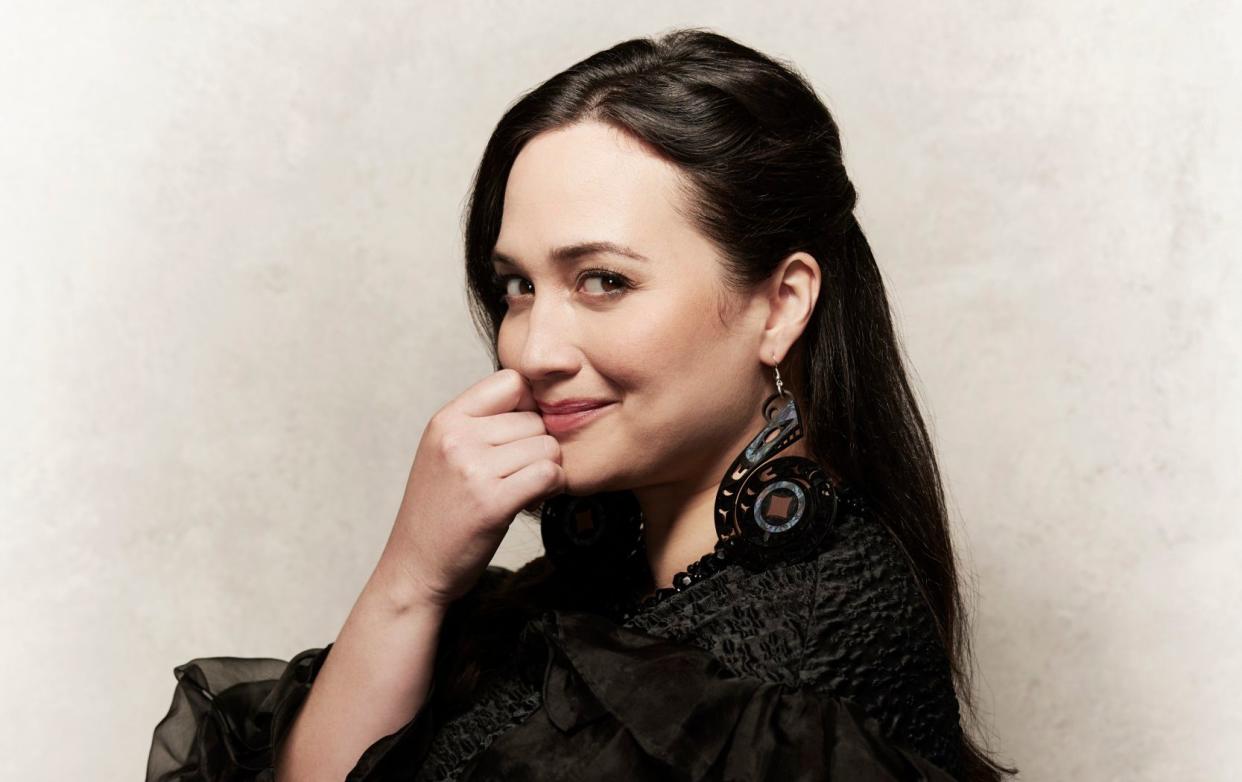
- Oops!Something went wrong.Please try again later.
- Oops!Something went wrong.Please try again later.
- Oops!Something went wrong.Please try again later.
- Oops!Something went wrong.Please try again later.
- Oops!Something went wrong.Please try again later.
- Oops!Something went wrong.Please try again later.
- Oops!Something went wrong.Please try again later.
When Lily Gladstone accepted the best actress award at the Golden Globes in January, for her role in Martin Scorsese’s Killers of the Flower Moon, she addressed the audience in the language of her ancestors. Translated, she said: “Hello, all my friends and relatives. My name is Piitaaki [Eagle Woman]. I am Blackfeet. I love you.”
A fortnight later, she became the first Native American woman to be nominated for best actress at the Oscars. “It feels really overdue,” she says, when we meet in London, pointing out that some of the earliest motion pictures – Edison’s 1894 reels of the Sioux Ghost Dance and Buffalo Dance – documented Native American culture. “But it feels lovely to share it.” At the podium, she’d said, “This is for every little Native kid who has a dream.”
In Killers of the Flower Moon, she plays Mollie Kyle, a real-life woman from the Osage Nation, whose lands in Oklahoma were found to have oil in the late 19th century. It made the Osage the richest people per capita in the world, which soon brought in white settlers intent on gaining control of their “headrights”. In the 1920s, when the film is set, it is possible that as many as 150 Osage died unnatural deaths, with 24 confirmed murders; at times, the three-and-a-half-hour film plays like a horror story. At its heart are Robert De Niro’s businessman William Hale, his nephew Ernest Burkhart (Leonardo DiCaprio) and the woman that Hale suggests Burkhart should marry, Mollie. Gladstone’s performance is transfixing in its stillness and force, as love and suspicion vie beneath a calm exterior. She also has an elegant way of smoking with a cigarette holder.
“Leo and I decided that we wanted to put that in from our first meeting, when he invited me over to his,” she tells me. “One of the things that actually put me at ease is he pulled out his pack of American Spirits. I’m like, ‘Oh, thank god, can I bum one please?’ So he’s like, ‘You smoke?’ We went through a pack of cigarettes, sitting there, talking about Ernest and Mollie.”
DiCaprio suggested that their characters should smoke together in the film. Gladstone readily agreed. It reminded her “of walking into an elder’s house, it smells like cigarette smoke – Native ladies really love a good smoke”. They checked with Osage people on the production whether Mollie would have been a smoker – “They said definitely,” and that she would probably have used a carved cigarette holder. “Tobacco can be a transactional thing culturally for us,” she notes. “If you don’t make it known why you’re handing somebody tobacco, you could be entering into a contract… [but] Mollie’s just thinking, ‘I want to watch how this white man smokes.’”
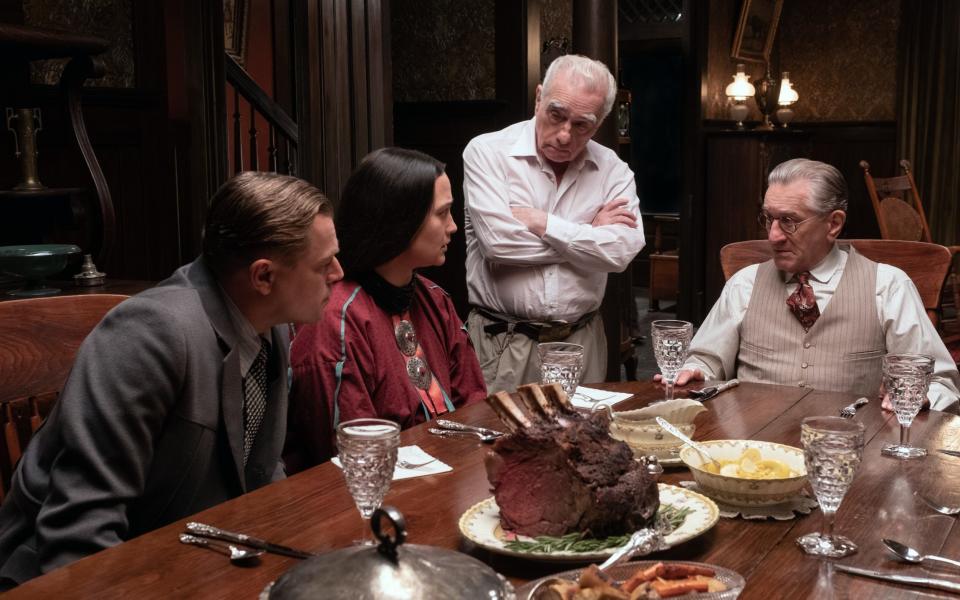
Gladstone has a grounded, dry sense of humour. But at 37, she has had to deal with the sudden weight of becoming such a visible representative of Native people. We talk about the warning she put on social media last year, about the brutality inflicted on a trusting community that the film depicts. “See it with people you feel safe with,” she wrote to Native Americans, pointing out that the story is recent history. “You’ll likely have a lot of generational grief to process.”
She felt the trauma herself, she says. “As an actor, your brain knows certain things aren’t real, but your body doesn’t necessarily catch on.” Having Native people in many different roles on set helped. “Any American Indian will say that when we get together, we just laugh – it’s kind of the key to our resilience.” It sustained her, but also heightened the impact of her scenes, she says. And when friends, excited by this cultural moment, began seeing the film in cinemas, “I found myself wanting to warn each of them, this might be a triggering movie… And then I saw a good friend of mine [Reservation Dogs actress Devery Jacobs] be triggered by it and respond to it very publicly with some pretty harsh criticism, which caused some pretty unnecessary backlash for her.”
Jacobs said on social media that watching it was “f---ing hellfire” and complained that it “normalises the violence committed against us”. It was proof to Gladstone, she says, “that this is why trigger warnings are kind of essential”. Yet the film, she believes, is significant. “Many of the descendants of the survivors and the victims of the ‘Reign of Terror’ that are depicted in the film, [the murdered] Henry Roan’s descendants, predominantly, but also Mollie Burkhart’s granddaughter, they saw so much importance in what this film was.”
It has brought her global recognition. Yet there were already interesting roles on Gladstone’s CV. She played a ranch hand who forms a relationship with Kristen Stewart’s law graduate in Kelly Reichardt’s admired Certain Women (2016) and returned for the same director’s First Cow in 2019. She also played stepmother to Paul Giamatti’s high-powered attorney Chuck Rhoades in Billions. Did they have a chance to say hello when both picked up Golden Globes (Giamatti for The Holdovers) last month? Not on the night, Gladstone says, but, “We went for a walk into Palm Springs, [I was] like, ‘Hi, son.’ He asked me how I was doing with all this, and I said, ‘I’m doing great,’ or whatever platitude I came up with. Then he asked again, ‘Really, how are you doing?’ It was lovely to have that familiarity and that check-in.”
Fame has arrived quickly. After Covid lockdowns laid waste to the industry, Gladstone was in the process of registering for a data-analytics course at community college when she got a notification that Scorsese was requesting a Zoom call with her. When she heard she’d got the role, Gladstone “noticed a picture of my great-grandma Lily on the mantel, kind of watching me”, she told an audience later. “I’m like, ‘Oh, Grandma.’”
Soon, she was shooting her first scene with DiCaprio. “It’s strange to watch the effect that his star power has,” she says. Meeting him at his house had been “demystifying”, but when it came to acting together, “I was shaking.” It had happened to her before, on Billions, where, “I couldn’t take the shake out of my face.” She can rationalise it as “the character landing”, but it was also, “Oh, I just got that note from Martin Scorsese to change how I’m performing to Leonardo DiCaprio. I realised fast that these men are generational talents for a reason [and] it would be doing the film, myself, them, a disservice if I stayed in that starstruck-ness too long. Eventually, they just became Leo and Marty, and, later, Bob [De Niro].”
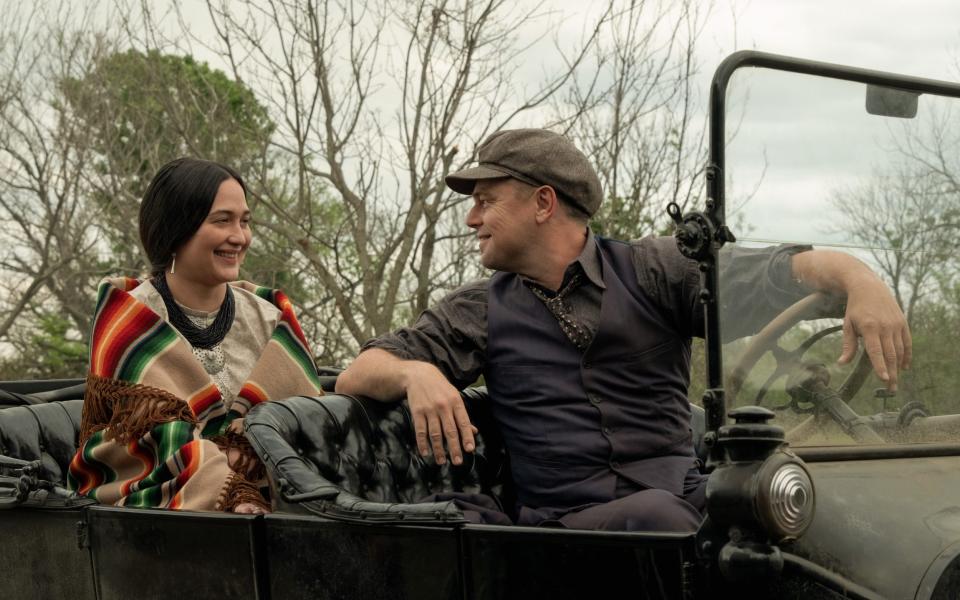
So if DiCaprio said, come and hang out on my yacht…? “I wouldn’t go on a yacht,” she says, laughing, “but I do hang out with Leo when time permits.”
Since the film wrapped, there have been premieres, publicity tours and the awards circuit, a dizzying shift that makes sitting next to Tim Cook, the Apple CEO, at lunch seem like a “normal day”, and locking eyes with Ryan Gosling at the Barbie table at the Golden Globes, where you “bow to each other, because it’s impossible to get across the sea of people”, start to feel like “fame blindness”.
What does she think of the Oscars’ snub for Barbie, which saw its director Greta Gerwig and star Margot Robbie miss out, while Gosling’s Ken was rewarded? “I was very disappointed to see neither [nominated in the directing or acting categories],” she says. “I think Ryan Gosling said it best: there is no Ken without Barbie and there’s no Barbie without Greta. I definitely want to acknowledge and celebrate that it is still historic for both of these women in the nominations they got [Gerwig for best adapted screenplay, and Robbie as producer for best picture]. I mean, they saved the film industry over the summer.”
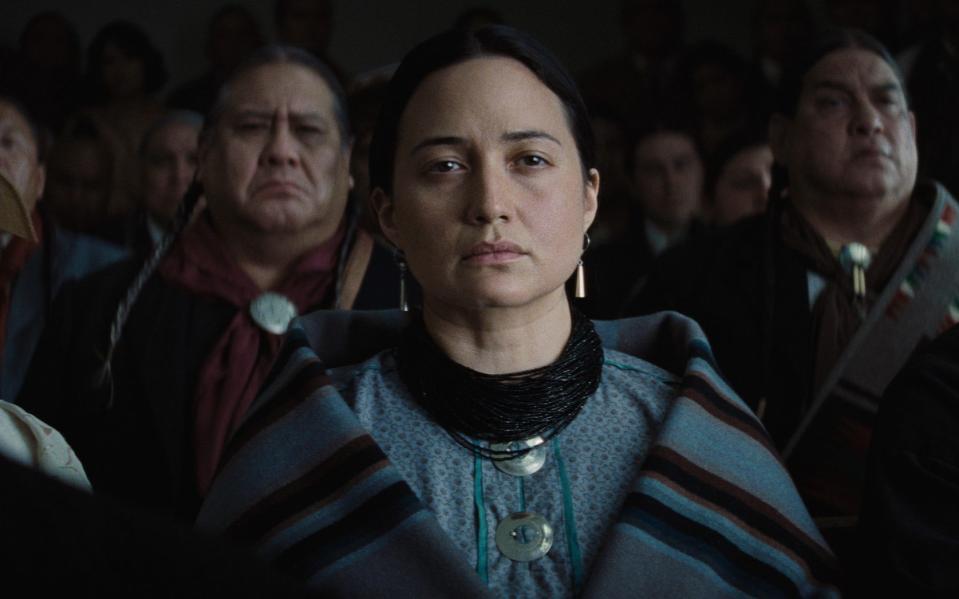
Gladstone grew up on a Blackfeet reservation in Montana. “It was very rural. It bordered Glacier National Park, which ancestrally is Blackfeet land, but until the 1970s, we couldn’t access it without paying a fee,” she says. “We were snowed-in nine months of the year, so people watched a lot of movies.”
“My memories of early childhood were sitting on the laps of elders, spending a lot of time with grandparents, great-aunties, listening to stories, bringing firewood to elders. While my mom was working, [my dad] and I would go into the mountains in the dead of winter, and I would draw in the truck when he was felling trees, and then I would help stack the logs. Some of our elders wouldn’t drink the water in Browning – it was bad water, for one, but there were some cultural taboos around the source of it, so we would go into the mountains and tap springs and bring fresh water down to elders. I was taught to gather medicine: where to go and which plants to look for and when to harvest them.”
Her father has Blackfeet and Nez Percé ancestry; her mother, Betty, is of white European descent, and is an early-education specialist. “I’ve got a very close relationship with my parents,” Gladstone says, “they just poured so much into making sure that their overly exuberant, super-energetic, adorably chunky little girl was able to dance. I wanted to be a ballerina, and they never told me I couldn’t be, like you see in biopics, ‘Oh, honey, you don’t have the body for that.’ They’re like, yeah, you’re great at it, we’re gonna drive a 180-mile round trip every weekend to take you to ballet.
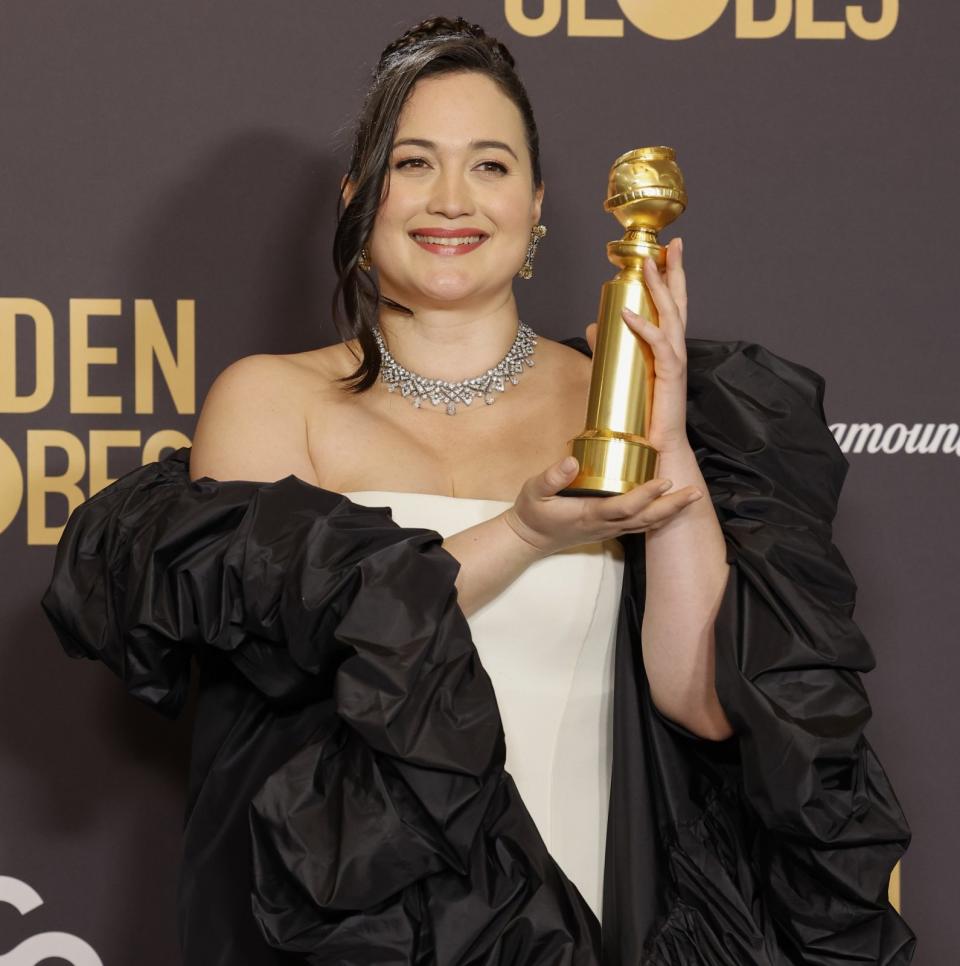
“One of my favourite images from childhood was our little ballet troupe would go and compete in Seattle. It’s about a 12-hour drive from the reservation, but my dad volunteered to drive our little troupe of seven- to 11-year-olds to this suburban dance competition, where all the moms have soccer vans and Mercedes. And my dad rolls up in his jacked-up Suburban that used to hold all this wood that we would chop, and all these little ballerinas jumping out of this big mountain-man rig with snow and mud falling off it, like, ‘Here’s the Montana girls.’”
Her family, Gladstone says, has distant connections to William Ewart Gladstone, the 19th-century British prime minister. “Of course, it was the Brits that colonised my family, too,” she says, wryly. The surname has been passed down patriarchally, although both of her father’s parents were indigenous. An ancestor was the son of a Scottish emigrant, who became a lumber baron.
It’s an irony, she says, that when she first visited London, “In one swoop, I swung by Westminster Abbey, where William Ewart lies, and then up the road to where, unbeknownst to me, my great-great-great-grandfather’s war shirt is in the British Museum. Red Crow was chief of the Blood Nation. When King Charles came to Canada [in 1977], when he was still Prince Charles, the nation gave him my grandpa’s name.”
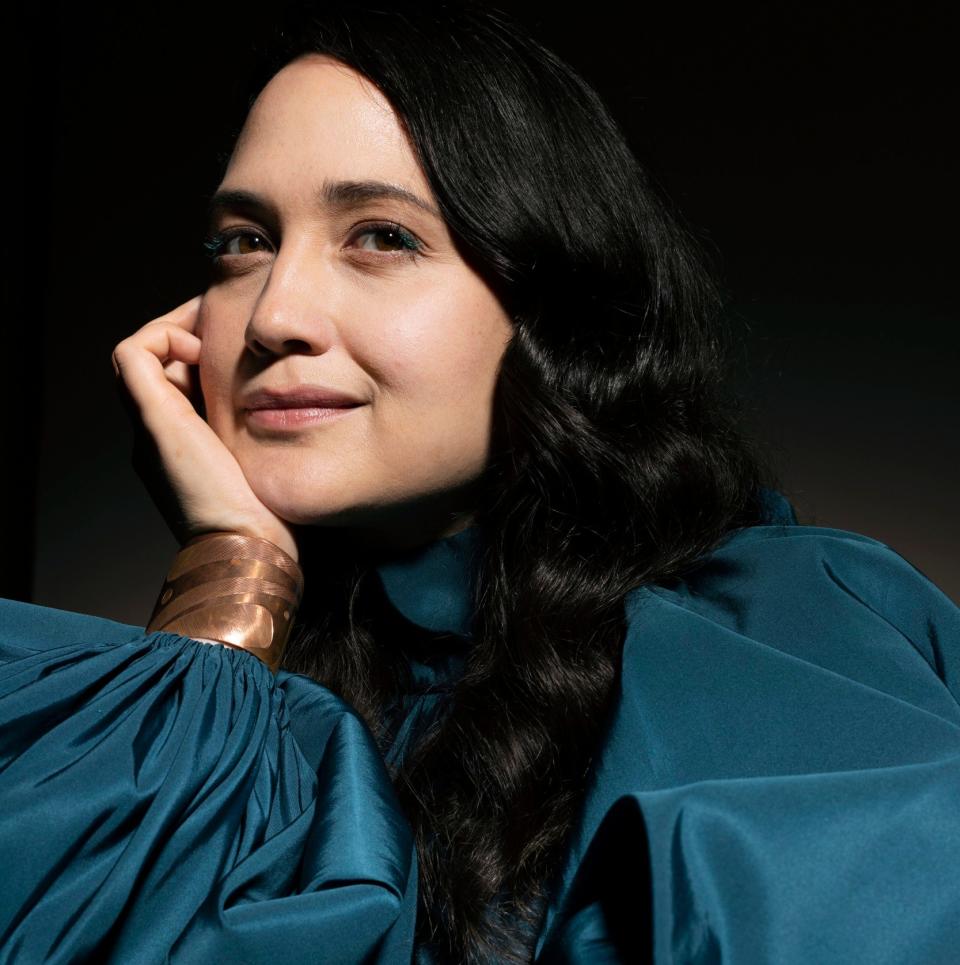
“Red Crow,” she explains, “was the signatory for the Blood Nation of a peace treaty entered into with the Crown [in 1877].” Discovering her ancestor’s shirt “was really emotional. And, you know, you always wonder if something’s in the British Museum, how it got there. But when I was texting my family about it, it sounds like Grandpa would have traded it in good faith on signing the peace treaty.”
Will the Hollywood myth of cowboys and Indians ever be replaced? “At its worst, it’s an extension of Manifest Destiny,” she says – referring to the 19th-century belief that white Americans were divinely ordained to settle the continent. It has created “these cowboy archetypes for people to worship and to try and emulate. I mean, Bezos in a cowboy hat. We have this saying in Montana, ‘all hat, no horse’, and you can tell in Montana which cowboys’ boots are clean, you know.”
Besides, she adds: “Where I grew up, all the cowboys are Indian.”
Killers of the Flower Moon is now streaming on Apple TV+

